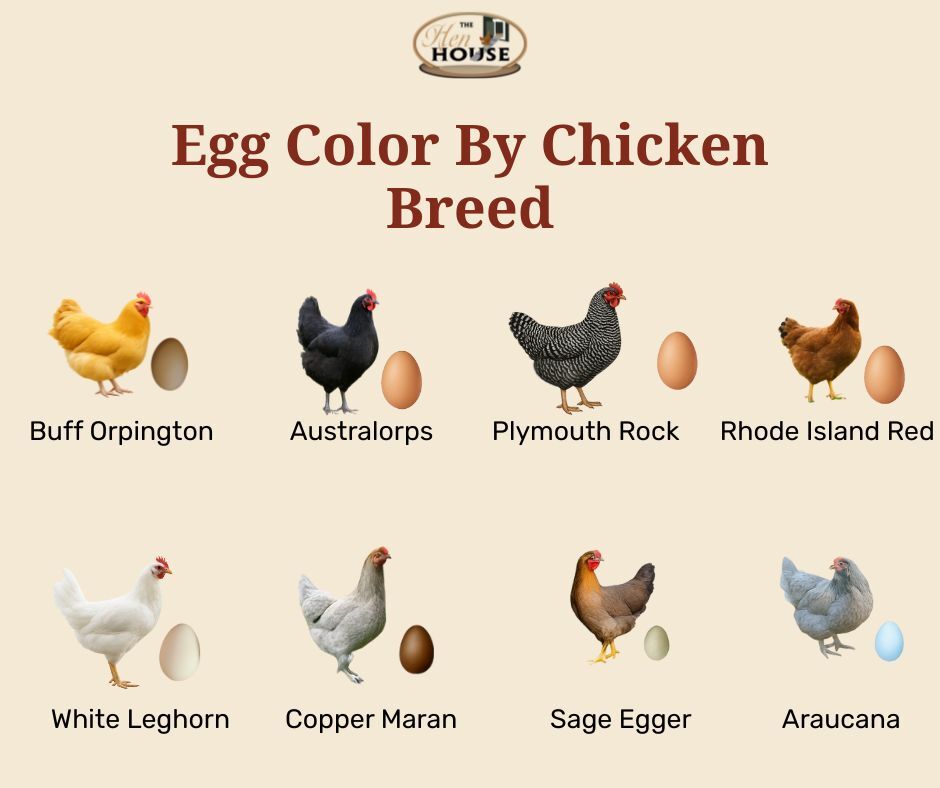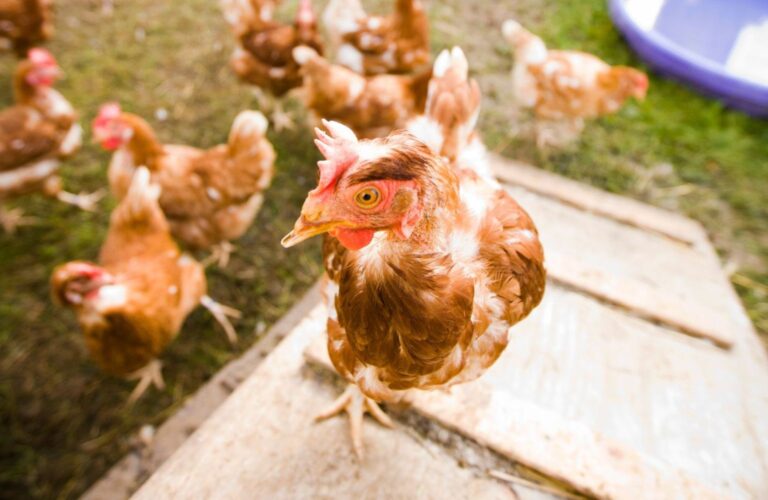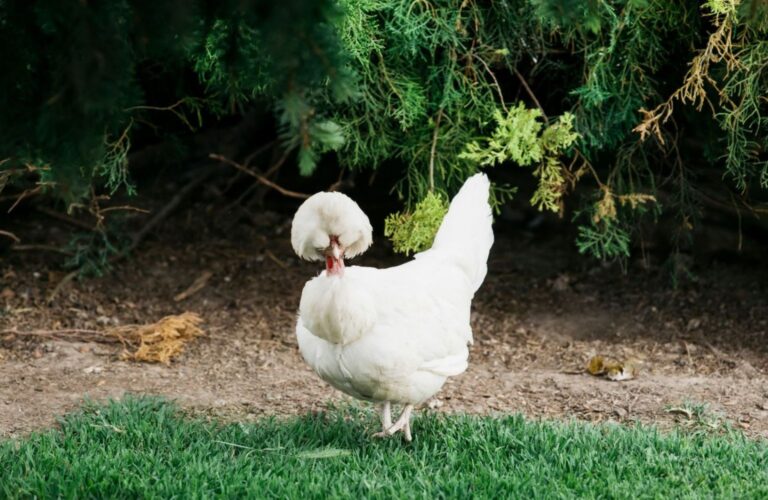If you’re aiming for a colorful egg basket and a flock full of variety, you’re in the right place. With the right combination of breeds, your daily egg collection can look like it came straight from an Easter basket.
In this guide, we’ll discuss common egg colors and the breeds that lay them, along with providing insight into what causes those color differences.
Want to know which chickens lay the most eggs and in what colors? Watch the video above.
Curious about adding exotic breeds to your flock and bringing more color to your carton? Keep reading.
Which Chickens Lay Which Color Eggs?
Different chicken breeds lay different colored eggs. Below, we’ll explore six common egg colors and the breeds that produce them, so you can add variety to your basket and choose chickens that complement your flock.
1. What Chickens Lay White Eggs?
We all know about white-colored eggs as they are the most common of all chicken egg colors. Below are some of the most common breeds that lay white eggs.
Interestingly, many breeds that lay white eggs are of Mediterranean origin:
- Leghorns
- Anconas
- Andalusians
- Buttercups
- Catalana
There are non-Mediterranean breeds that also lay white eggs:
- Appenzeller Spitzhauben
- Breda
- Crèvecoeur
- Cubalaya.
Tinted or (off-white) egg-laying chickens include:
- Dorkings
- Fayoumi
- La Fleche
- Faverolles
- Lakenvelders
You might not know that white eggs are known as the wild type, or o – this means the egg coloring is natural and non-mutated.
Jungle fowl (Ancestors of every chicken breed) lay white eggs, which is why white eggs are known as the wild type.
The white color is both inside and outside of the shell.
2. What Chickens Lay Brown Eggs?
The second most common chicken egg color is the humble brown egg.
Hens that lay dark brown eggs include:
- Welsummer
- Barnevelder
- Black Copper Marans
Whereas breeds that lay light brown eggs are:
- Rhode Island Reds
- Basque
- Orloffs
- Jersey Giants
- Orpingtons
The brown coloration of their eggs is synthesized in the hen’s shell gland (uterus) – exactly how and where is still unknown.
Brown dye (known as protoporphyrin IX) is deposited in the shell layers of the egg over a nearly twenty-hour period in the shell gland.
Interestingly, the brown does not color the shell’s inside (it remains white).
You will notice the heaviest application of the color is in the outer layers of the shell. This is because the hen has a certain amount of dye available, and when it starts to run low, the coloration becomes paler (much like your photocopier running out of ink).
The darkest-colored eggs will be laid earlier in the season, and the color will gradually fade out later.
3. What Chickens Lay Blue Eggs?
Perhaps the most vibrant of chicken egg colors is the blue egg. Chickens lay blue eggs because they have a dominant blue gene for their shell color, which was caused by a retrovirus that altered the DNA sequencing in the hen.
The blue color is created by a substance called Oocyanin in the hen’s liver. This blue coloration extends from the inside of the egg to the outside, making it blue throughout.
Hens that lay blue eggs include:
- Araucana
- Dongxiang
- Lushi
- Cream Legbar
- Ameraucana
- Easter Egger
4. What Chickens Lay Green Eggs?
Chickens that lay green colored eggs were also affected by the same retrovirus that caused hens to lay blue eggs. So, there is some crossover between breeds that lay green and blue eggs, like the Easter Egger. However, these two are most notable for their green-colored eggs:
- Isbar
- Olive Egger
5. What Chickens Lay Purple Eggs?
The only breed known to lay plum-colored eggs on a relatively consistent basis is:
- Langshans
The quality of the color will depend on parentage.
6. What Chickens Lay Pink Eggs?
Many breeds can lay eggs that appear pinkish in color, but this is largely a perception. Some will see a pale colored egg, while others will see a pale pink egg.
Some breeds that can lay pinkish colored eggs include:
- Buff Orpingtons
- Easter Egger
- Olive Egger
- Plymouth Rock
- Silkies
Which Chicken Breed is Best for Which Egg Color?

This largely depends on your needs for your flock. If your primary concern is the color, here are the best breeds for each:
- White: White Leghorn
- Blue: Cream Legbar
- Chocolate Brown: Black Copper Maran
- Brown: Rhode Island Red
- Green: Isbar
- Plum-Croad or Purple: Langshans
- Pink: Orpingtons
However, if temperament, the number of eggs laid per year, egg color, and egg size are all considered, this list may vary. In our blog, you can learn which top egg-laying chickens lay which color eggs to get a better idea of which to add for the number of eggs & egg size.
How Do I Know What Chickens Lay What Colored Eggs?
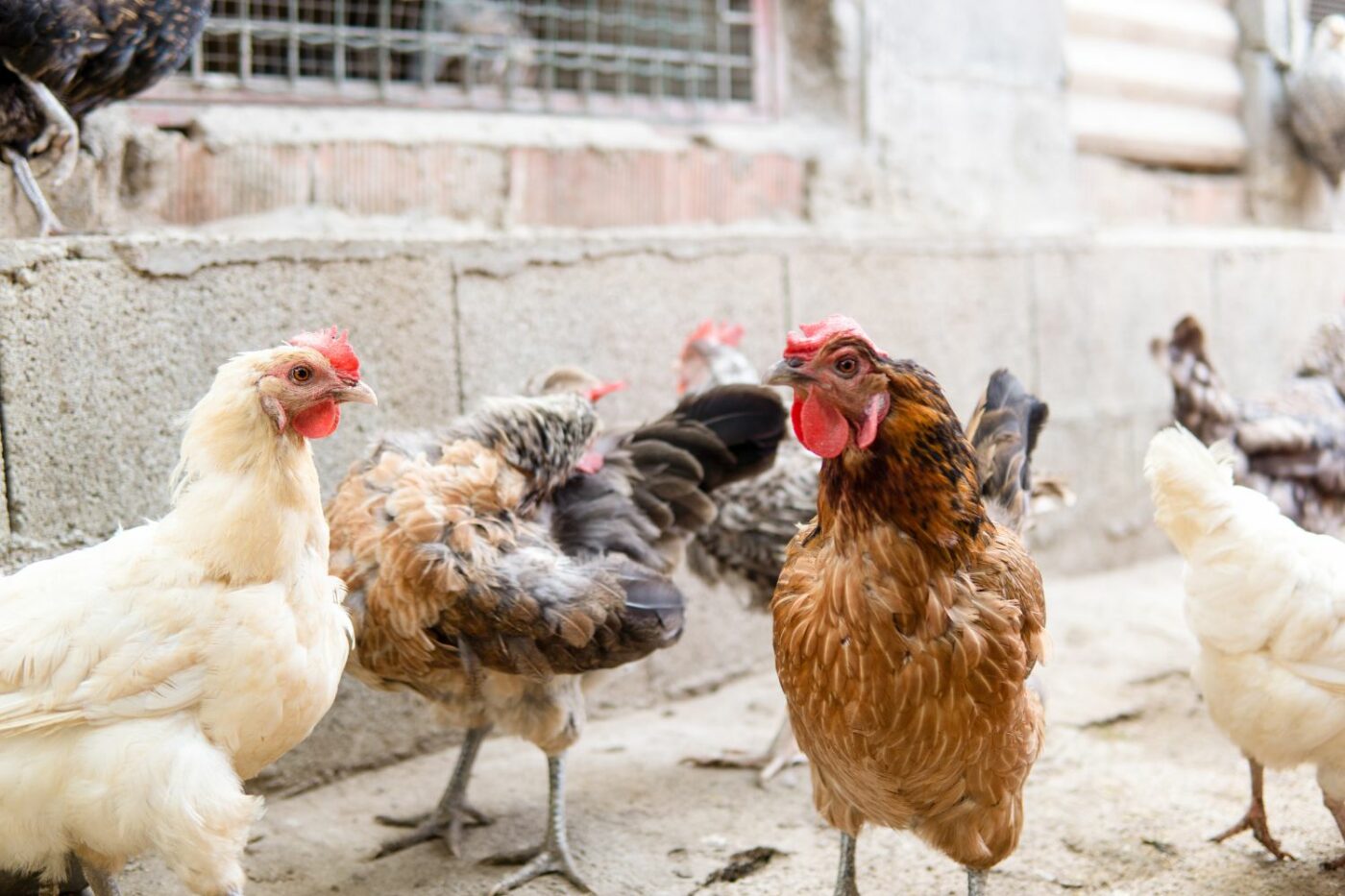
You can tell the eggshell color by the hen’s earlobe. Hens with white earlobes typically lay white or lightly tinted eggs. Hens with red earlobes most commonly lay brown eggs, but there are always exceptions to those rules. Different shades of chicken egg colors can come from the same bird on different days. This is because the bloom that is put on right before the egg is laid contains a fair amount of pigment.
How Are Chicken Egg Colors Formed?
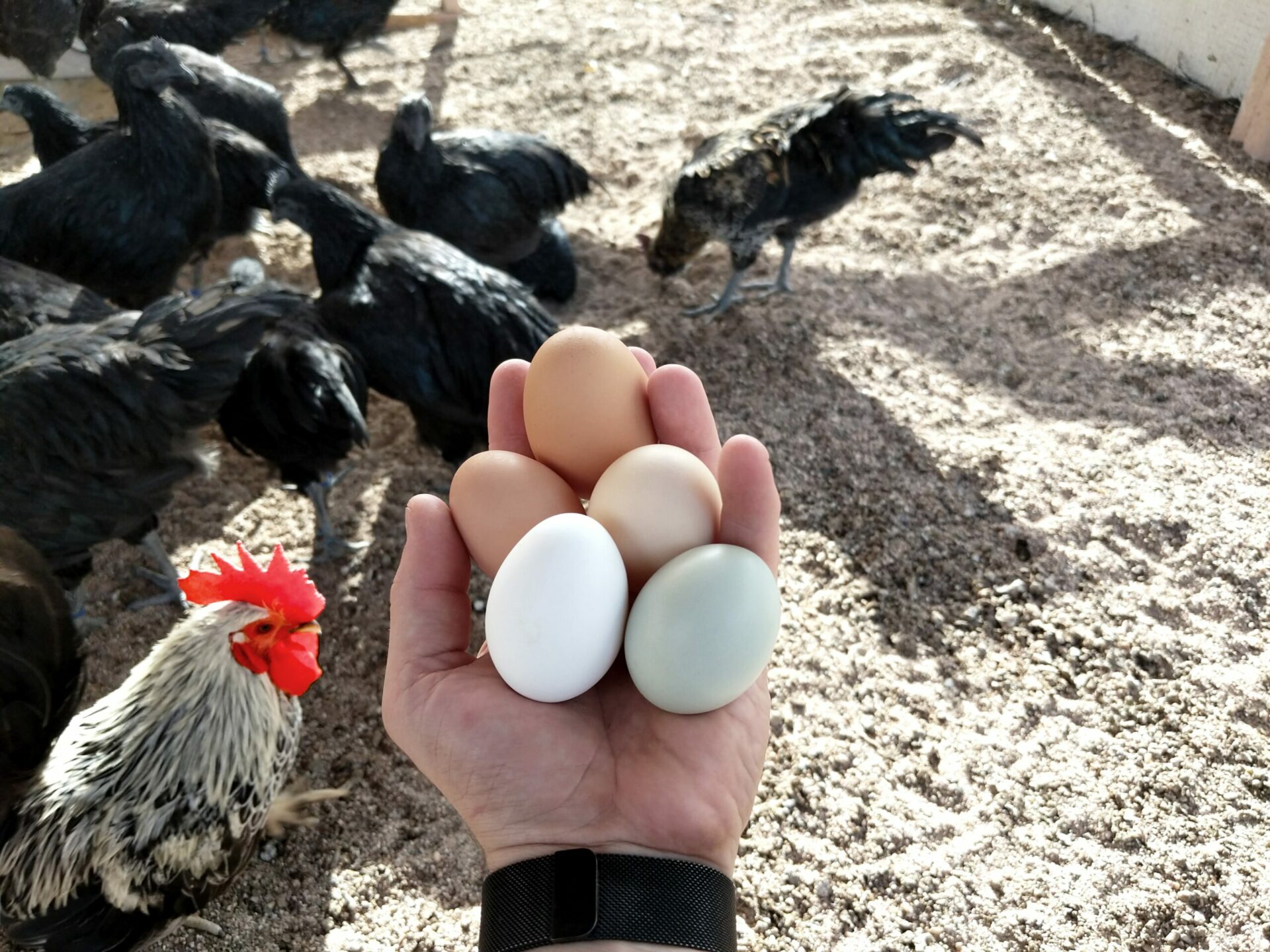
Chicken egg color is typically formed as a result of calcium. If your hens lay colored eggs, look at the inside of the shells to see the importance of calcium:
- White eggs will be white all the way through.
- Brown eggshells will be white on the inside.
- Blue eggshells are blue all the way through.
- Green eggshells will be blue on the inside and green on the outside.
Does the Color of A Chicken Egg Mean Anything?
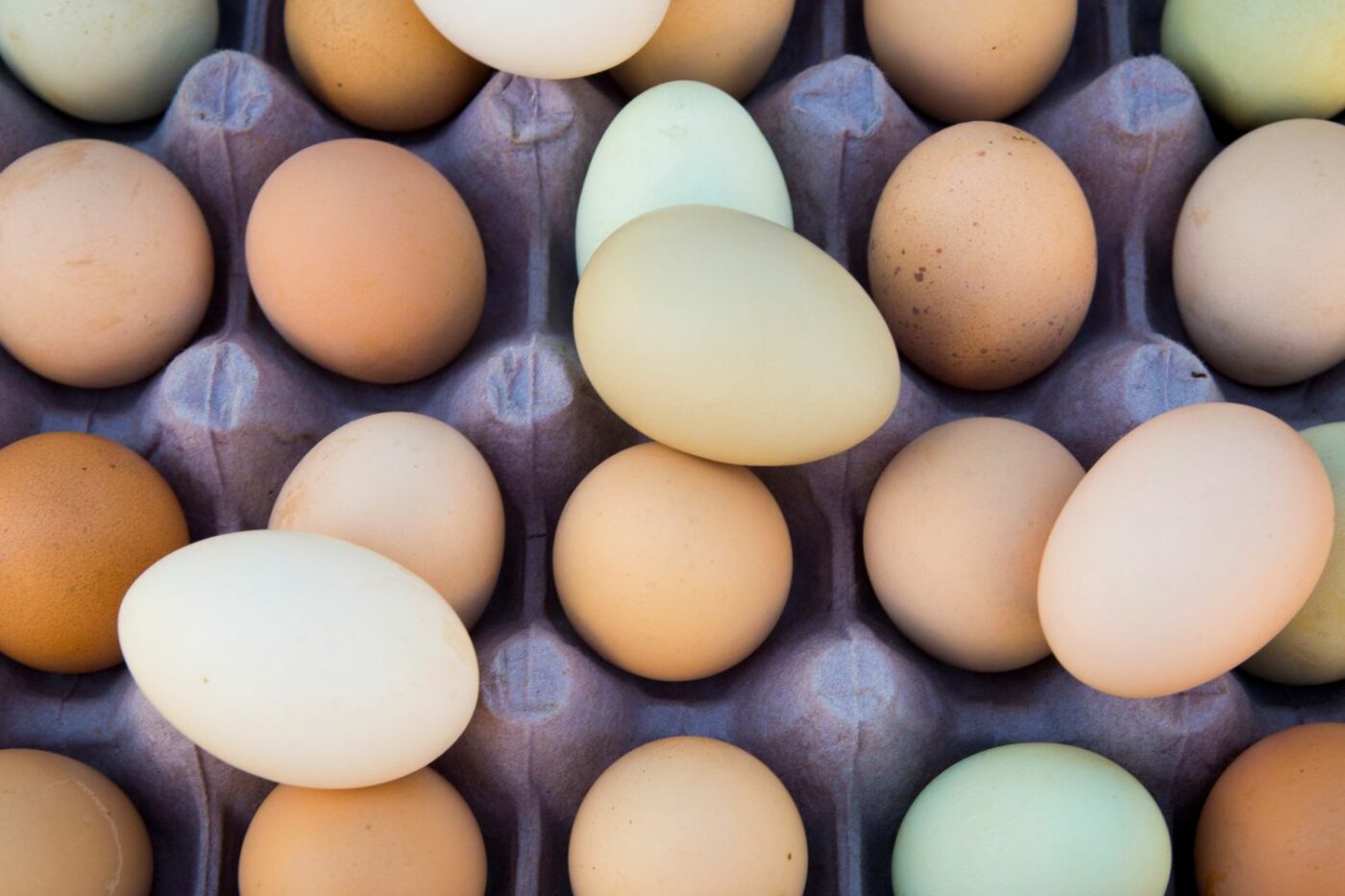
A chicken’s egg color isn’t symbolic of anything other than its genetics or breeds. Some believe this affects nutrition; this is largely a myth.
What is the Healthiest Egg Color?
As noted above, there is no “healthiest” egg color as the color does not affect the quality of the eggs.
Are Brown Eggs Healthier?
No, brown eggs are not healthier than white eggs. Egg color is merely a reflection of the chicken’s genes or breed.
Do Different Colored Eggs Taste Weird?
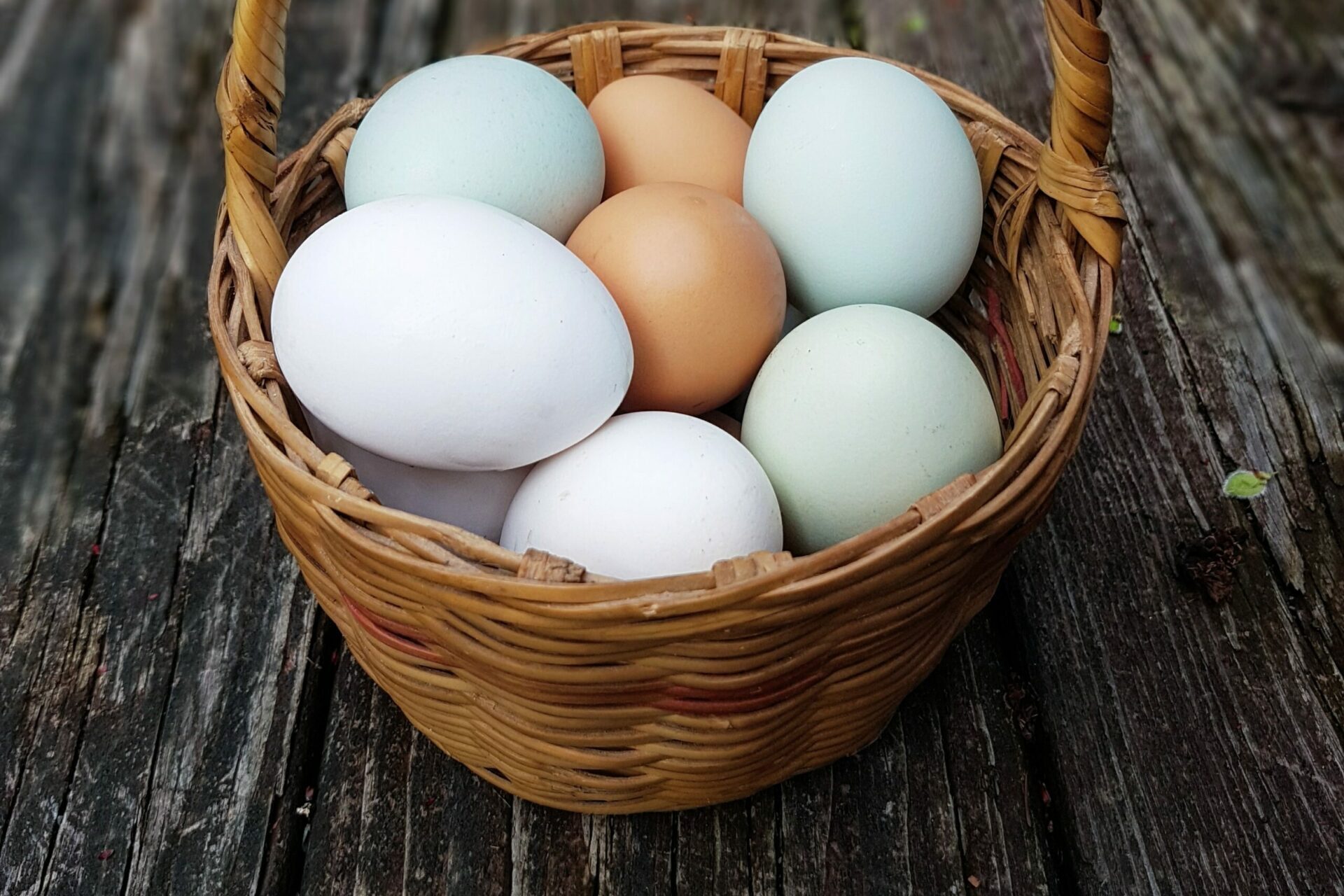
No, the chicken egg colors don’t affect the taste. All factors that determine chicken egg colors have nothing to do with egg flavor. The most significant factor for egg taste lies in the diet of the chicken that lays them. Chickens that are fed a healthy diet consisting of proteins such as grains and insects tend to produce better-tasting eggs. Freshness also makes a difference in how an egg tastes.
If you are thinking about starting your flock of chickens, we would love to help you get started and learn more about our products and how we can help you.
The Perfect Chicken Coop For Breeds of All Egg Colors, Shapes, & Sizes

If you plan to add more color to your egg collection box, you’ll likely need to expand your flock. That means upgrading to a larger chicken coop that can house all your chickens. For chicken farmers focused on egg collection and managing a growing flock, the Hen House Collection coops are the perfect fit.
We prioritize making day-to-day life easier for chicken farmers. That’s why our coops feature egg collection boxes, roll-away nesting boxes, and come in a variety of sizes. You can find a coop with enough room for your expanding flock and one that simplifies the egg collection process.
Our coops also include attached runs, feeding and watering dishes, roosting bars, nesting boxes, and more, creating a space that keeps your flock comfortable and producing healthy eggs for you to collect.
Request a quote or find a dealer near you today to create a custom chicken coop or find a premade model available in your area.


